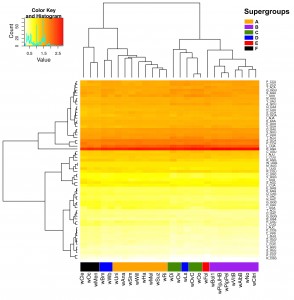New publication on Wolbachia genome structure
- 12, 03, 2015
- Category News

The group, in collaboration with Università degli Studi di Milano, Equipe Ecologie Evolution Symbiose, Poitiers, University of Edinburgh and University of Liverpool published a novel study on the journal Open Biology
Wolbachia pipientis is possibly the most widespread endosymbiont of arthropods and nematodes. While all Wolbachia strains have historically been defined as a single species, 16 monophyletic clusters of diversity (called supergroups) have been described. Different supergroups have distinct host ranges and symbiotic relationships, ranging from mutualism to reproductive manipulation. In filarial nematodes, which include parasites responsible for major diseases of humans (such as Onchocerca volvulus, agent of river blindness) and companion animals (Dirofilaria immitis, the dog heartworm), Wolbachia has an obligate mutualist role and is the target of new treatment regimens. Here, we compare the genomes of eight Wolbachia strains, spanning the diversity of the major supergroups (A–F), analysing synteny, transposable element content, GC skew and gene loss or gain. We detected genomic features that differ between Wolbachia supergroups, most notably in the C and D clades from filarial nematodes. In particular, strains from supergroup C (symbionts
of O. volvulus and D. immitis) present a pattern of GC skew, conserved synteny and lack of transposable elements, unique in the Wolbachia genus. These features could be the consequence of a distinct symbiotic relationship between C Wolbachia strains and their hosts, highlighting underappreciated differences between the mutualistic supergroups found within filarial nematodes.
Supergroup C Wolbachia, mutualist symbionts of filarial nematodes, have a distinct genome structure
